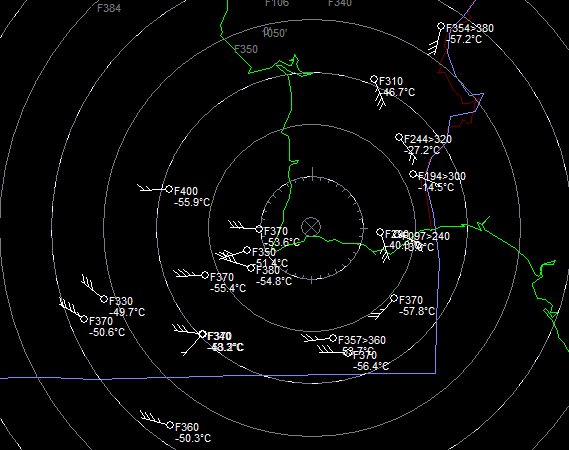Most Commented
Coding With Data Structures From Basics




Description material

Last updated 7/2021
MP4 | Video: h264, 1280x720 | Audio: AAC, 44.1 KHz
Language: English | Size: 11.29 GB | Duration: 24h 45m
Hands on Implementation / Coding with Data Structures
What you'll learn
Data Structures programming,
Requirements
C language
Description
A data structure is a collection of data values, the relationships among them, and the functions or operations that can be applied to the data. Different types of data structures are suited to different kinds of applications, and some are highly specialized to specific task. Data structures provide a means to manage large amounts of data efficiently. Efficient data structures are key to designing efficient algorithms. Data structures can be used to organize the storage and retrieval of information stored in both main memory and secondary memory.Data structures serve as the basis for ADT. The ADT (Abstract Data Types) defines the logical form of the data type. Data structures are based on the ability of a computer to fetch and store data at any place in its memory, specified by a pointer. The array and record data structures are based on computing the addresses of data items with arithmetic operations. The linked data structures are based on storing addresses of data items within the structure itself. The implementation of a data structure usually requires writing a set of procedures that create and manipulate instances of that structure. A linked list is a linear collection of data elements whose order is not given by their physical placement in memory. Each element points to the next. It is a data structure consisting of a collection of nodes which together represent a sequence. Each node contains: data, and a link to the next node in the sequence. This structure allows for efficient insertion or removal of elements from any position in the sequence during iteration.Following topics are covered as part of hands-on / Live coding videos :Linked Lists (LL) Implementation / Coding:Concept of linkCreating a Linked List (LL)Appending a node to LLDisplay of LLLength of LL (count)Reversing of LLSorting Adding node at Start of LLInserting node in between of LLDeleting a nodeCreating a Double LLAppending a node to Double LLDisplay of Double LLLength of Double LL (count)Reversing of Double LLInserting a node in between a Double LLRotate Double LLCount Pairs with criteria for a Double LLQuestions Circular LL overview (access pointers)Creating a Circular LLAdding node at Start Circular LL (approach 1)Traversal / Display Circular LL (approach 1)Inserting node in between a Circular LL (approach 1)Deleting a node Adding node at End Circular LL (approach 2)Traversal / Display Circular LL (approach 2)Circular LL - Queue (Adding Node)Circular LL - Queue (Removing Node)QuestionsStacks (Implementation / Coding):Stack overviewStack with ArrayExpressionsEvaluation of Postfix expression Infix to Post fixEvaluation of Prefix overview. infix to prefix overviewApplication: Finding next big elementStack using Linked ListReversing Stack with Linked ListQuestionsQueues (Implementation / Coding) :Queue OverviewQueue using ArrayPriority Queue with ArrayQueue using Linked ListPriority Queue using Double Linked ListQuestionsRecursionRecursion Overview, Phases, TypesRecursive FunctionsLinked List operations using RecursionQuestionsTreesBinary TreesTree TraversalsInorderpreorderpostorderBinary Search Trees (BST)BST - InsertionBST - Insertion & TraversalsTraversals ExplainedBST - SearchSearch operationsBST DeletionDeletion casesBinary Tree to BST conversionIdentify a Tree to be BSTIdentify zero, one child nodes of BSTQuestionsSortingSelection SortSelection Sort AnalysisBubble SortBubble Sort AnalysisInsertion SortInsertion Sort AnalysisQuick SortQuick Sort AnalysisQuick Sort, Merge Sort DiscussionQuestionsTopics of Data Structures and interaction
Overview
Section 1: Linked List (Implementation / Coding)
Lecture 1 About DS Course
Lecture 2 Summarizing DS Topics about Live Coding (/ Hands-on)
Lecture 3 Before understanding Linked List
Lecture 4 Concept of Link
Lecture 5 Linked List
Lecture 6 Creating Linked List (1)
Lecture 7 Creating Linked List (2)
Lecture 8 Display of Linked List, Count
Lecture 9 Reversing Approach
Lecture 10 Reversing Linked List
Lecture 11 Sorting of Linked List
Lecture 12 Add New node at Start
Lecture 13 Insert New node after a position
Lecture 14 Delete a node from the list
Lecture 15 Create Double Linked List (Double LL)
Lecture 16 Double LL: Display and Count
Lecture 17 Reversing a Double LL
Lecture 18 Insert a New node after a position in Double LL
Lecture 19 Double LL: Rotation (1)
Lecture 20 Double LL: Rotation (2)
Lecture 21 Double LL: Counting Pairs with a criteria
Lecture 22 Questions
Lecture 23 Data Structure Topics and Interaction
Lecture 24 Circular LL - overview
Lecture 25 Create LL, Add at Begin via front
Lecture 26 Display (Traversal) via front
Lecture 27 Insert node after an Element via front
Lecture 28 Delete node with key via front
Lecture 29 Add at End via rear, Display
Lecture 30 Create, Add to queue (Circular LL), Display
Lecture 31 Remove from queue (Circular LL), Display
Lecture 32 Questions
Section 2: Stacks (Implementation / Coding)
Lecture 33 Stack Overview
Lecture 34 Stack using array
Lecture 35 Application: Handling Expressions
Lecture 36 Evaluation of Postfix expression Overview
Lecture 37 Evaluation of Postfix expression Implementation
Lecture 38 Infix to Postfix Overview
Lecture 39 Infix to Postfix Implementation
Lecture 40 Prefix Evaluation and Infix to Prefix - Overview
Lecture 41 Application: Finding Next Big Element
Lecture 42 Stack using Linked List (LL)
Lecture 43 Reversing Stack using Linked List
Lecture 44 Questions
Section 3: Queues (Implementation / Coding)
Lecture 45 Queues Overview
Lecture 46 Queue using Array
Lecture 47 Priority Queue (1)
Lecture 48 Priority Queue (2)
Lecture 49 Queue using Linked List
Lecture 50 Priority Queue using Double Linked List
Lecture 51 Questions
Section 4: Recursion, Linked List Ops with Recursion
Lecture 52 Recursion Overview
Lecture 53 Recursive Functions, Phases
Lecture 54 LL Operations using Recursion (1)
Lecture 55 LL Operations using Recursion (2)
Lecture 56 Questions (& Discussion)
Section 5: Trees (Implementation / Coding)
Lecture 57 Binary Trees (1)
Lecture 58 Binary Trees (2)
Lecture 59 Tree Traversals (1)
Lecture 60 Binary Tree Traversals (2)
Lecture 61 Binary Tree Traversals (3)
Lecture 62 Binary Search Tree (BST) - Overview
Lecture 63 BST - Insertion Overview
Lecture 64 BST- Insert (Non Recursive)
Lecture 65 BST - Insert (Recursive)
Lecture 66 BST Traversal Explanation
Lecture 67 BST - Insert with Traversals (1)
Lecture 68 BST - Insert with Traversals (2)
Lecture 69 BST - Search (/Find) Overview
Lecture 70 BST - Search (1)
Lecture 71 BST - Search (2)
Lecture 72 BST - Deletion Overview
Lecture 73 BST Delete (1)
Lecture 74 BST Delete (2)
Lecture 75 Binary Tree to BST Conversion
Lecture 76 Identify Tree to be BST
Lecture 77 Identify Zero, One child Nodes of BST
Lecture 78 Questions
Section 6: Sorting
Lecture 79 Selection Sort, Analysis
Lecture 80 Bubble Sort, Analysis
Lecture 81 Insertion Sort (1)
Lecture 82 Insertion Sort (2), Analysis
Lecture 83 Quick Sort Overview
Lecture 84 Quick Sort Implementation
Lecture 85 Quick Sort, Analysis, MergeSort Discussion
Lecture 86 Questions
fresh students, C programmers
Buy Premium Account From My Download Links & Get Fastest Speed.
https://1dl.net/4g53zoqnrmo2/Coding_with_Data_Structures_from_Basics.part1.rar
https://1dl.net/eruf1whc2iv9/Coding_with_Data_Structures_from_Basics.part2.rar
https://1dl.net/xfi0jbjen2g2/Coding_with_Data_Structures_from_Basics.part3.rar
https://1dl.net/188v0xcvo05r/Coding_with_Data_Structures_from_Basics.part4.rar
https://1dl.net/xqu1bj56n5d5/Coding_with_Data_Structures_from_Basics.part5.rar
https://1dl.net/1nywpn4mz3cx/Coding_with_Data_Structures_from_Basics.part6.rar
https://filerice.com/71hxiyl2m4p3/Coding_with_Data_Structures_from_Basics.part1.rar
https://filerice.com/ldozcgad75rv/Coding_with_Data_Structures_from_Basics.part2.rar
https://filerice.com/p2lu0u7ri6fe/Coding_with_Data_Structures_from_Basics.part3.rar
https://filerice.com/9nq3y378tnt7/Coding_with_Data_Structures_from_Basics.part4.rar
https://filerice.com/dj8fk3x9jer1/Coding_with_Data_Structures_from_Basics.part5.rar
https://filerice.com/xobjz3kz0pxg/Coding_with_Data_Structures_from_Basics.part6.rar
https://rapidgator.net/file/98a56fd0a696a8581b5d0e4b0385253e/Coding_with_Data_Structures_from_Basics.part1.rar.html
https://rapidgator.net/file/3a4dcb68f9e7a99f9d2a427b5550a5e3/Coding_with_Data_Structures_from_Basics.part2.rar.html
https://rapidgator.net/file/d895d3d09f7612ae12df1462c2f4e273/Coding_with_Data_Structures_from_Basics.part3.rar.html
https://rapidgator.net/file/10501444c12facd579bc7a7a1c527449/Coding_with_Data_Structures_from_Basics.part4.rar.html
https://rapidgator.net/file/cf5b353394e54cd28281e25d140e0534/Coding_with_Data_Structures_from_Basics.part5.rar.html
https://rapidgator.net/file/398cbbe7ead3e568a5f66b20345f98a2/Coding_with_Data_Structures_from_Basics.part6.rar.html
Join to our telegram Group
Information
Users of Guests are not allowed to comment this publication.
Users of Guests are not allowed to comment this publication.
Choose Site Language
Recommended news
Commented


![eM Client Pro 9.2.1735 Multilingual [Updated]](https://pikky.net/medium/wXgc.png)






![Movavi Video Editor 24.0.2.0 Multilingual [ Updated]](https://pikky.net/medium/qhrc.png)

